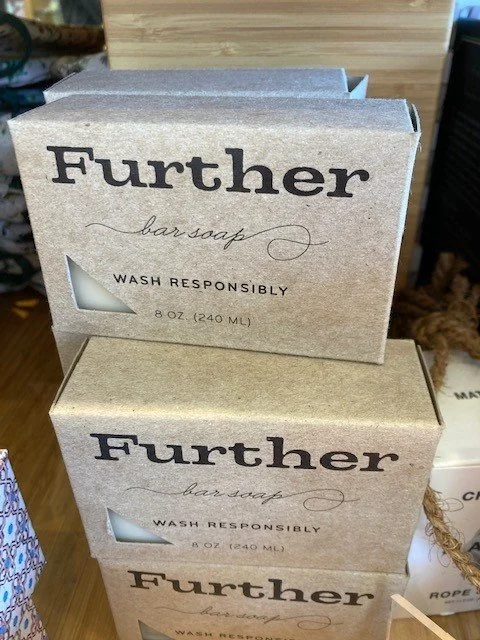What makes a mark good?
You don’t need to have a superb brand to have a protectable one.
Trademarks are classified along a spectrum of distinctiveness: from generic terms, which aren’t entitled to trademark registration because we don’t want to unfairly deprive the public of being able to accurately describe things, all the way to coined marks, protectable precisely their coinage means they don’t identify the goods or services designated by the mark (e.g., BONVOY or ROOMBA). Close to coined marks on the protectability spectrum are arbitrary marks, words that are in fact real words yet have no meaning in connection with particular goods or services. APPLE computers and CAMEL cigarettes are two of the best examples of such marks.
I spotted this soap in the (unbelievably fantastic) gift shop at the Huntington Library this weekend and immediately thought “AHA! A spectacular arbitrary mark in the wild!” FURTHER tells me absolutely nothing about soap; indeed, it is such a vague term that it doesn’t even suggest anything about soap. Hence, in my view, it’s an excellent trademark. And registered.
